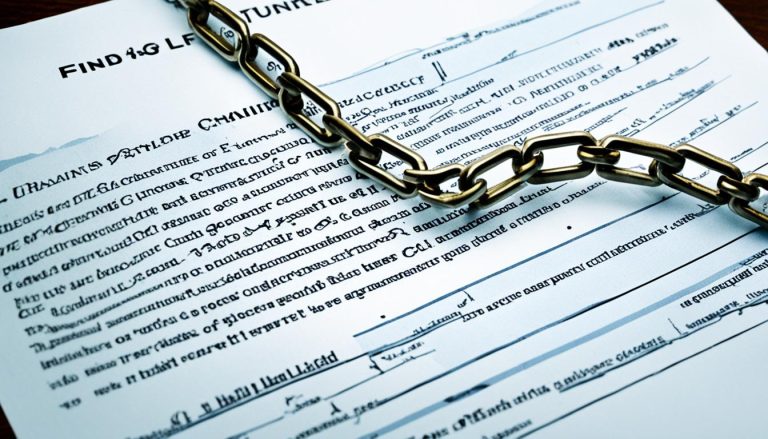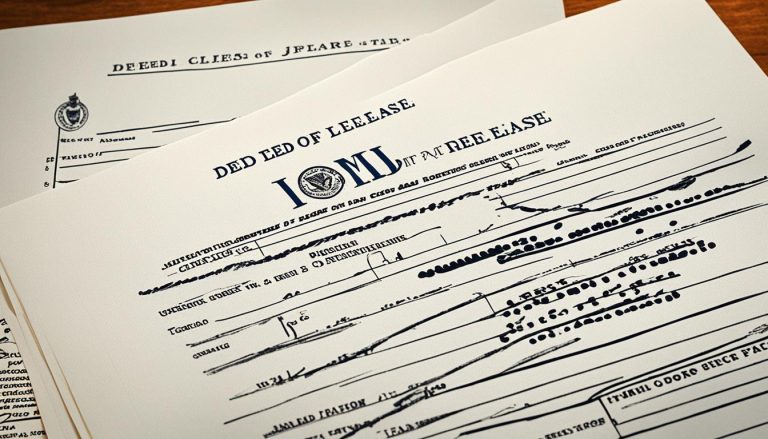Join us as we delve into the intricacies of drafting a compelling Deed of Adherence, uncovering its essential components, and deciphering the language of collaboration. Through real-world examples and expert insights, we’ll equip you with the knowledge and tools necessary to navigate the complexities of partnership expansion with confidence and clarity.
What is Deed of Adherence?
A deed of adherence is a legal document that plays a crucial role in contracts and agreements, ensuring that all parties involved understand and adhere to their obligations. It admits a new party, such as an employer or shareholder, to an existing contract or agreement. The deed of adherence serves as a guarantee that the new party will comply with the terms and conditions outlined in the original agreement. It is a signatory document that binds all parties to their responsibilities.
The deed of adherence is also known as a deed of participation or a deed of admission. It is an essential tool for protecting contractual rights and maintaining clarity in legal agreements. Through its deed execution and deed registration, it formalizes the addition of a new party and their commitment to the existing agreement. Whether it is a deed of adherence property or a deed of adherence purpose, this legal contract ensures the smooth functioning of the agreement.
The Purpose and Function of a Deed of Adherence
A deed of adherence serves a crucial purpose in the realm of legal agreements. It functions as a document that brings a new party into an existing contract or agreement. By signing this deed, the new party expresses their agreement to comply with the terms and conditions laid out in the original agreement. This legal document ensures the protection of contractual interests and facilitates the smooth inclusion of new parties.
The primary purpose of a deed of adherence is to secure the rights and obligations of all parties involved in the agreement. It establishes a legally binding connection between the new party and the existing signatories, safeguarding the rights and responsibilities outlined in the initial contract. By adhering to the terms and conditions of the agreement, the new party becomes an integral part of the contractual framework.
One of its key functions is to maintain the integrity and continuity of the original agreement. With a deed of adherence in place, all parties involved can trust that the terms of the contract will be upheld by the newly added party. This ensures a harmonious working relationship and protects the interests of each signatory.
Furthermore, a deed of adherence provides legal clarity and certainty. It outlines the specific obligations and expectations that the new party must comply with, leaving no room for ambiguity or misinterpretation. This document serves as a reference point for all parties involved, ensuring that everyone understands their rights and responsibilities, and helping to mitigate potential conflicts or disputes.
It is important to understand the importance of a deed of adherence in protecting contractual interests and maintaining legal agreements. Through this document, all parties involved can have peace of mind knowing that their rights are safeguarded and their obligations are clearly defined. By adhering to the terms of the agreement, new parties can seamlessly integrate into existing contracts, promoting transparency, and trust.

Key Points:
- A deed of adherence brings a new party into an existing contract or agreement
- It ensures compliance with the terms and conditions of the original agreement
- It protects contractual interests and maintains legal agreements
- It provides legal clarity and certainty for all parties involved
When is a Deed of Adherence Necessary?
A deed of adherence becomes necessary in various business scenarios where the addition of a new shareholder or the transfer of shares is involved. It is commonly used during periods of business expansion or a change in ownership, where the inclusion of new parties in an existing contract or agreement is essential.
For instance, when a shareholder decides to sell their shares, it becomes crucial to ensure the legal compliance of the new shareholder with the terms and conditions outlined in the existing shareholders agreement. In such cases, a deed of adherence is employed as the appropriate legal instrument to incorporate the new shareholder.
The deed of adherence guarantees that all parties involved understand and agree to the terms established in the original agreement, maintaining legal clarity and continuity. It acts as a safeguard to protect the interests of the existing shareholders and ensures a smooth transition of ownership or business expansion.
By adhering to the deed, the new party acknowledges their responsibilities and obligations, fostering trust and transparency among all stakeholders. Whether it’s a change in ownership structure, the addition of new shareholders, or the transfer of shares, a deed of adherence helps maintain the integrity of existing agreements while accommodating the growth and evolution of a business.
Integrating a deed of adherence in these situations not only provides a solid legal framework but also establishes a foundation for effective collaboration, enabling businesses to adapt and thrive in an ever-changing economic landscape.

How to Use a Deed of Adherence Template?
Using a deed of adherence template is a convenient and cost-effective way to incorporate new parties into an existing contract or agreement. The template can be downloaded in Word format and easily customized to suit specific needs. It typically includes guidance notes and a step-by-step guide for completing the document.
Before utilizing the template, it is important to ensure that the new party has the legal right to hold shares or join the agreement. This step ensures adherence to legal compliance. Once confirmed, the new shareholder must follow the terms and conditions outlined in the original agreement.
To begin, download the deed of adherence template and open it in your preferred document editor. You can edit the template by adding or removing clauses, adjusting the language to match your circumstances, and customizing the formatting to fit your document’s style. This flexibility allows you to tailor the template to your specific needs while maintaining legal compliance.
When customizing the template, it is crucial to accurately reflect the parties involved, their roles, and the obligations they assume. Pay close attention to the wording and ensure that all relevant information is included in the document.
Once the template has been customized to your satisfaction, it is important to review and proofread the document for any errors or inconsistencies. Make sure that all parties involved agree on the terms and conditions before proceeding.
Once the deed of adherence is finalized, it must be legally witnessed to ensure its validity and enforceability. This process usually involves the signatures of all parties involved, as well as the signature of an independent witness to verify the signing process.
Benefits of Using a Deed of Adherence Template:
- Saves time and effort: A pre-designed template provides a ready-made structure, saving you the time and effort required to create a new document from scratch.
- Ensures legal compliance: The template includes the necessary clauses and language to ensure that the deed of adherence is legally sound and compliant with relevant regulations.
- Customization: The template can be easily customized to fit your specific needs and requirements, allowing you to incorporate new parties seamlessly.
- Clarity and consistency: By using a template, you can maintain clarity and consistency in the document, ensuring that all parties understand and agree to the same terms and conditions.
- Standardized format: The template provides a standardized format for the deed of adherence, making it easier to navigate and understand for all parties involved.
By utilizing a deed of adherence template, you can streamline the process of incorporating new parties into an existing contract or agreement. It simplifies the task while ensuring legal compliance and maintaining clarity in the document.
Deed of Adherence vs. Deed of Accession
In the context of a shareholders agreement, the terms “deed of adherence” and “deed of accession” are often used interchangeably, depending on the location. In the UK, a deed of adherence is typically used when a new party joins an existing shareholders agreement. In Australia and New Zealand, the term “deed of accession” is more commonly used for the same purpose. The difference between these terms lies in their regional usage.
Additionally, a letter of adherence is a shorter written statement that serves a similar purpose to a deed of adherence, expressing a new party’s agreement to adhere to the terms of an existing contract, typically a shareholders agreement.
It is important to understand these terms and their usage to ensure legal validity and compliance when incorporating new parties into existing agreements.

Table
| Deed of Adherence | Deed of Accession |
|---|---|
| Commonly used in the UK | Commonly used in Australia and New Zealand |
| Brings a new party into an existing shareholders agreement | Brings a new party into an existing shareholders agreement |
| Protects contractual interests | Protects contractual interests |
| Requires the new party’s agreement to abide by the terms of the existing agreement | Requires the new party’s agreement to abide by the terms of the existing agreement |
Conclusion
In summary, the deed of adherence is a crucial legal document when incorporating new parties into existing contracts and agreements. It provides a framework for including new shareholders, employers, or participants and ensures their compliance with the terms and conditions set out in the original agreement. By binding new parties, the deed of adherence plays a vital role in protecting contractual interests and maintaining clarity and continuity in agreements.
Using a deed of adherence template and following the necessary legal procedures facilitate the efficient addition of new parties to contracts while ensuring legal compliance. It is essential for all parties involved to understand and fulfill their obligations, fostering a smooth and harmonious business relationship.
By acknowledging the significance of the deed of adherence and upholding legal compliance, businesses can safeguard their contractual interests, establish clarity in agreements, and continue to thrive in their respective industries.






